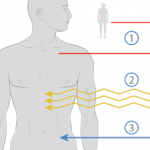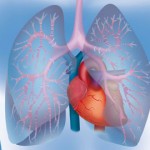Certain systemic manifestations of SARDs can also increase risks and serve as relative or absolute contraindications. For example, a myositis patient with active muscle disease may be a poor candidate, as they are unlikely to recover well after surgery. Severe esophageal dysmotility, pulmonary hypertension or bone marrow involvement might be contraindications. Scleroderma renal crisis or other renal impairment can also increase risk, as might upper airway involvement from rheumatoid arthritis.3
Dr. Danoff also noted that some SARD-ILD patients have severe physical deconditioning related to their diseases, which can make recovery from the procedure more difficult.
SARD-ILD patients who are lung transplant candidates also need their underlying SARD under good medical control prior to transplant.
Referral Timing
Generally, patient referral for potential lung transplant should begin before the patient is in urgent need, before they meet criteria for active placement on the transplant list. This may allow time to address certain modifiable risk factors, such as obesity, malnutrition or medical comorbidities.4
Dr. Danoff noted some of the factors that indicate a patient may be ready for lung transplant referral, for example, lung imaging patterns suggestive of fibrosis. These tend to be patients with a usual interstitial pneumonia or nonspecific interstitial pneumonia pattern of ILD. Another factor is a forced vital capacity (FVC) of <40% predicted.5
“In addition to declines in lung function, the other thing that I think is a really important marker is when patients suddenly require oxygen for the first time; that’s telling us that they really have come to a point where they’ve changed their trajectory,” said Dr. Danoff.
Officially adding the patient to the transplant list usually happens a little later, not immediately after transplant referral. Markers that a patient is moving toward needing a transplantation include a ≥10% decline in FVC or a ≥15% decline in diffusing capacity of the lungs for carbon monoxide over a six-month period. Other signs are dropping oxygen saturation percentages and repeated hospitalizations.5
Dr. Danoff recommended taking steps to help patients prepare for transplant when it becomes necessary. At the same time, she suggested working to optimize therapy for ILD to delay the need for lung transplantation for as long as possible. “Every year therapies become better for connective tissue disease (CTD)-ILD, and lung transplant gets better,” she added.
Outcomes
Transplants can fail due to initial primary graft dysfunction, acute rejection or chronic loss of the allograft, leading to lung deterioration and, ultimately, patient death. Dr. Danoff shared unpublished data from Johns Hopkins showing that patients with SARD-ILD seem to have a higher risk of developing primary graft dysfunction compared with patients with idiopathic pulmonary fibrosis, the standard comparator non-SARD-ILD; SARD-ILD patients also may have higher rates of vascular complications.


